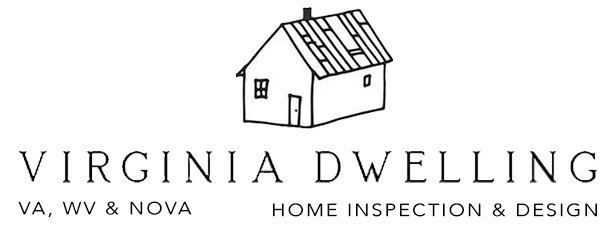Some Things Never Change
Hans Christian Anderson's Snow Queen, the sort, of kind of inspiration for the Frozen movies.
Frozen?
If you have children or know someone who has children or have seen children in the last several years, you have gazed into the entertainment sun that is Frozen.
If you haven’t, then you have achieved nirvana and you’re to be congratulated. Thousands of us will be seeking your guidance and wisdom. Use your powers for good.
Those who have been caught in the winds of the Frozen storm and have had their subconscious reprogrammed by dozens of songs with melodies more stimulating to brain synapses than sugar know that the first movie starring the Scandinavian sisters is one of self-discovery and actualization while the second continues this theme with a healthy dose of coming-of-age via perpetual change.
Early in the second movie this theme of perpetual change is introduced in the song, “Some Things Never Change”. While the lyrics of the song imply that we are surrounded by truly immutable things, this message is undercut by the action accompanying the song: the line, “an old stone wall that will never fall” is accompanied by a falling stone wall, and viewers remember the line “our flag will always fly” later when a supernatural storm rips the flag from its rigging. You get the point. In the end, the characters learn that love is the only thing that is truly unchanging – which is great and totally justifies parents spending a disproportionate slice of the monthly household budget on every consumer good imaginable featuring Norwegian princesses with enormous eyes.
“I feel the earth move under my feet” – Carole King
Accepting that the physical world is always changing is a cornerstone of good homeownership, and good home inspecting. All except the most enlightened among us cleave to the idea that some things will never change. In my discussions with homebuyers, this desire is behind the misleading illusion that if a house is built well enough it will last for hundreds, nay, thousands of years.
I’m here to tell you that while there is some truth to this notion, it is also completely impractical. “But,” you say, “what about the pyramids?” They took decades to build with slave labor and they are in a desert, an unpleasant but fairly stable environment. Also they aren’t houses. “But castles!” Most look like this:
This castle might be a little drafty.
Those that are still standing remain so only through the expenditure of vast sums of money.
The physical world is always changing. If you have the financial resources of a government or you’re, say, one of the richest people in the world, you can certainly have something built that will last thousands of years. Most of us, however, have houses built by talented but imperfect masons and carpenters under less than ideal conditions on ground that is always moving. You see where I am going with this.
Deep breath. Those of us who don’t wield trillions of dollars are not doomed to live in sandcastles perpetually teetering on the edge of collapse. The key questions become: What causes that old stone wall to fall? And how do you keep it from falling?
No handrail for the steps to that magical ice castle. Someone didn't get a home inspection.
The Elements
In FrozenII, the princess with magical abilities, Elsa, spends a good deal of the movie taming the mythological embodiments of the four elements before learning she is the fifth element that can harmoniously bind them all together. [1] The other four elements are earth, fire, water, and wind. The ambivalence of the elements adds tension to the movie: they are harmful and helpful.
Let’s get Zen for a moment and realize that these same elements, which are needed to build a house, are the same ones that break it down. The earth is unstable. Fire burns. Wind wears. And water does all sorts of unhelpful things.
Water is the element that over time does more to damage a house than any other element.
Sure, fire can level a house in minutes, but over time water is a house’s most insidious enemy.
Water
What materials are used for the structural components of a house? Wood, metal, and masonry. What does water do to these materials? It rots wood, rusts metal, and mollifies masonry. These things don’t all take place at the same rate, but the point is that all of these materials are susceptible to water damage. To a point, my job can be boiled down to telling people to manage water well and pointing out where others have not.
If you take away one thing from this blog, let it be this:water is responsible for the vast majority of the structural damage I see in houses.
Exceptions always exist, but it is water that rots sheathing and framing, rusts steel lintels and beams, and dissolves mortar. Frozen ground can break down brick and even lift houses! In fact water is behind most of the foundation problems I see. Of course a poorly poured foundation can doom a house from the beginning, but water settlement around the house is much more likely to be the catalyst behind cracking and bowing.
Imagine a foundation, just a simple rectangle. Now, in your mind’s eye, add a patch of wet, muddy soil under one corner while the rest of foundation remains on dry, stable ground. Which corner is going to settle? Exactly. This often manifests itself as diagonal or vertical cracking in foundations.
This downspout is making the ground soft. See the cracking three courses up?
One more: imagine a house on a hillside. Water runs down the hill and settles against the rear foundation wall. What is going to happen? Bowing and horizontal cracking from hydrostatic pressure (water pushing on the foundation).
The Nokk
In Frozen II the element of water is portrayed as the Nokk, a water horse. Even if you aren’t a fan of overly-dramatic princesses and singing snowmen, the animation skill it must have taken to portray a horse made out of water is irrefutably impressive. The Nokk is the last element to be tamed by Elsa before she can complete her quest. It is the most elusive of the four, the most slippery. Go figure, it’s water. The takeaway here is simple: Don’t let water be the last thing you address as a home owner. Maintain your home’s exterior and drain water away from the house.
Of course your local home inspector would be happy to help if you think you need a plan and some direction.
[1] I’m pretty sure this came up in the movie, The Fifth Element, from the 90s.





